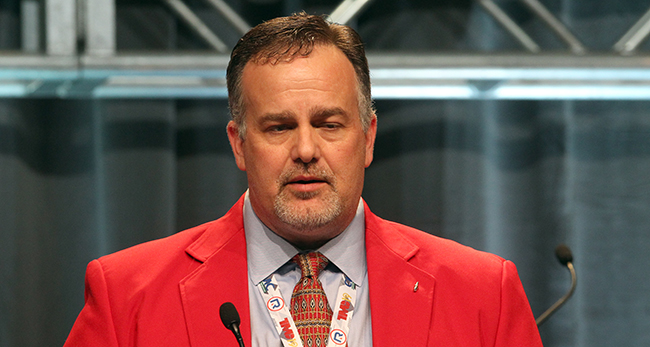Senior Reporter
Cab Comfort Crucial to Retaining Drivers, TMC Panel Says

ATLANTA — Providing a comfortable and safe environment in truck cabs is critical when it comes to retaining and recruiting drivers. That was the main conclusion at a roundtable discussion called: “Spec’ing the Cab & Sleeper for Driver Comfort and Safety,” which was held at American Trucking Associations’ Technology & Maintenance Council annual meeting March 19.
“We have to do things as fleets to get drivers to come onboard. It’s not all about pay nowadays; it’s about what you have to offer and what kind of vehicles they’re going to be put into when they come to work for you,” USA Truck Vice President of Maintenance Jeff Harris told the audience.
Harris said in a tight job market for truck drivers, fleets that have top-of-the-line equipment and do more to make drivers comfortable in the truck will have an advantage in hiring and retaining.
Harris and others on the panel said with an industrywide driver shortage that is likely to worsen and an array of original and aftermarket equipment available to make trucks more comfortable, drivers can be selective as to which companies they want to work for, especially as fleet turnover, while improving, still was at 73% in 2018 for large truckload carriers, according to ATA data.
As companies add equipment to make life better for the driver, Harris said they should be asking another important question.
“How will that option impact the vehicle’s performance? Is it going to impact the fuel economy? That is one of the biggest things everybody looks at today,” Harris said
“How is it going to drive that fuel economy? Is it going to impact my battery life? Several different things you have to look at as far as vehicle performance goes,” Harris said. “What is your ROI on each selected option? I can assure you, your CEO or CFO is going to want to know what your ROI is on the spec you just made on that tractor.”

Harris (John Sommers II for Transport Topics)
Panelists said to be competitive, many trucks at a minimum come equipped with comforts including flat-screen TVs and satellite programming, SiriusXM satellite radio, a refrigerator, Wi-Fi and a cellphone holder installed on the dash.
With sleeper berths now dominating the marketplace for new trucks, panelists said one of the key factors for drivers is making sure their nondriving time is productive and comfortable, so this means making the entire vehicle functional, with a swivel chair in the passenger seat, a table where a driver can eat and do paperwork and sufficient room for their clothes, including a wardrobe closet with shelving and a door.
Now, as technology improves, many drivers want to be in vehicles that have many of the new safety features including collision avoidance and side object-detection systems, adaptive cruise control, automatic transmissions, a telematics system and a navigation system.
Panelists also discussed the need to get input from drivers, and some companies have set up driver advisory boards that meet quarterly to solicit feedback on what items drivers want in their trucks.
“These drivers spend a long time out on the road — days, weeks and months out on the road — and so having those comforts is really important,” said Tim Norton, Western Star trucks product marketing manager.
“We really think as an OEM that a well-spec’d truck is critical,” said Jamin Swazo, on-highway marketing manager for Kenworth Truck Co. “If you have the right products in the truck, that is a huge impact to your fleet and being successful.
“You learn so much when you sit down and talk with a driver about things you didn’t think about before. You really need to continue to drive for their feedback and get that from the drivers after they have tested the product.”
He added, “It’s a home away from home. And you don’t want to be in your truck where it is not aesthetically pleasing. You don’t want squeaks and rattles when the driver is out on the road, and you don’t want there to be noise coming into the cab when you’re trying to sleep at night. A driver that gets good rest at night is going to be more productive, attentive and safer on the road.”


